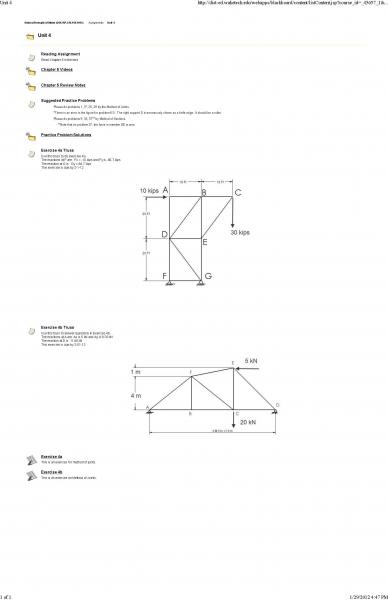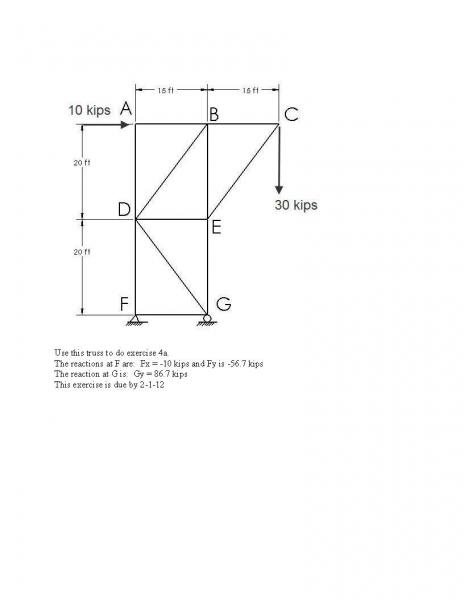Darwin18
Well-Known Member
Evening guys, I thought I might have some luck posting a statics question that I'm having a difficult time with. There certainly seems to be a large number of engineers on the site! This question might seem easy but I'm struggling with it.
I was able to solve the 2nd question, but I'm stuck on the first question (the one at the very top)
The reactions forces at F (RFx = -10 kips and RFy = -56.7 kips) and G (RGy = 86.7 kips). I need to calculate the forces in the trusses by using the method of joints.
I started at Joint F, made my free body diagram, and came up with:
FD = 56.7 kips (tension)
FG = 10.0 kips (tension)
I then move to Joint G, as it has two unknowns and that's where I get stuck. Looking ahead in the problem, I not sure where I would move to after Joint G. D and E both have more than two unknowns....
It's a long shot but I'd figure I'd ask you all.

I was able to solve the 2nd question, but I'm stuck on the first question (the one at the very top)
The reactions forces at F (RFx = -10 kips and RFy = -56.7 kips) and G (RGy = 86.7 kips). I need to calculate the forces in the trusses by using the method of joints.
I started at Joint F, made my free body diagram, and came up with:
FD = 56.7 kips (tension)
FG = 10.0 kips (tension)
I then move to Joint G, as it has two unknowns and that's where I get stuck. Looking ahead in the problem, I not sure where I would move to after Joint G. D and E both have more than two unknowns....
It's a long shot but I'd figure I'd ask you all.
























































![Craft A Brew - Safale S-04 Dry Yeast - Fermentis - English Ale Dry Yeast - For English and American Ales and Hard Apple Ciders - Ingredients for Home Brewing - Beer Making Supplies - [1 Pack]](https://m.media-amazon.com/images/I/41fVGNh6JfL._SL500_.jpg)



